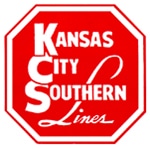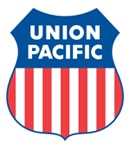
Net earnings came in at $553 million or an all-time record of $0.56 per share, an increase from the reported $529 million or $0.53 per share of the second quarter of 2014. CSX expects to deliver mid-to-high single digit earnings per share growth for 2015.
“While we saw challenges in a number of markets, CSX employees delivered an even safer, more reliable and more differentiated service product this quarter,” Chairman and CEO Michael J. Ward said. “We expect the momentum in network performance we saw in the second quarter to accelerate, continuing to create value for our customers and shareholders.”
Revenue declined six percent due to the impact of lower fuel recovery. At the same time, continued low fuel prices and savings from efficiency initiatives reduced expenses for the railroad by nine percent.
Operating ratio is a railroad’s operating expenses expressed as a percentage of operating revenue, and is considered by economists to be the basic measure of carrier profitability. The lower the operating ratio, the more efficient the railroad.

Operating income saw a decrease of 13 percent to $187 million. Operating ratio saw a 1.1-point increase to 68.1 percent compared with last year’s second quarter operating ratio of 68.3 percent. Reported net income totaled $112 million or $1.01 per share, a 15 percent decrease compared to the reported $130 million or $1.18 per diluted share for the second quarter 2014.
Overall, the railroad reported that carload volumes were six percent lower for the quarter. Second quarter revenue declined in all commodity groups except chemicals and petroleum, which grew by one percent. However, operating expenses also saw a decrease of eight percent to $399 million.
“KCS continued to scale its operations in both the U.S. and Mexico and has made strides in improving its network fluidity,” stated CEO David L. Starling. “Our actions contributed to the company attaining a solid second quarter operating ratio despite volume challenges, particularly in its energy commodity group. We expect our system performance and operating metrics to continue to improve throughout the remainder of the year.
“As evidenced in the weekly industry carload data, there are still uncertainties in many of the primary markets served by rail. However, KCS’ average daily volumes increased each month throughout the second quarter and the initial results from the first few weeks of July suggest the positive trend may be continuing.”

Excluding the deferred income tax expense, adjusted diluted earnings per share increased 12 percent to C$1.15 as compared to last year’s second quarter reported diluted earnings per share of C$1.03.
Operating income saw an increase of eight percent to C$1,362 million, while revenues for the quarter were flat at C$3,125 million. Carloadings decreased by three percent and revenue ton-miles declined by seven percent.
Operating ratio for the railway improved by 3.2 points to 56.4 percent over last year’s reported 59.6 percent.
“I’m proud of our very solid second quarter results, driven by the team’s swift action to recalibrate resources and double-down on efficiency, while continuing to improve customer service,” President and CEO Claude Mongeau said. “We’re focused on our long-term agenda and investing C$2.7 billion in CN’s capital program this year to support it, with an emphasis on the integrity and safety of the network.”

Net income rose to a record quarterly high of C$390 million or C$2.36 per diluted share, an improvement of 12 percent. Adjusted earnings per share gained 16 percent to C$2.45. Revenues for the railway remained unchanged at C$1.65 billion.
Operating income climbed 10 percent to C$646 million. Operating ratio fell to a second-quarter record of 60.9 percent, a 420-basis-point improvement. Adjusted earnings per share advanced 16 percent to C$2.45.
“CP remains disciplined during this period of economic uncertainty in identifying opportunities to control costs and improve efficiency to offset near-term headwinds,” CEO E. Hunter Harrison said. “Even in the face of this economic slowdown, CP’s commitment to providing the best service at the lowest cost will continue to serve us well moving forward.”

Operating income is down 11 percent to $1.9 billion. UP’s operating ratio of 64.1 percent is 0.6 points worse compared to the second quarter of 2014. The company also repurchased 8.0 million shares in the second quarter at an aggregate cost of $834 million.
“Solid core pricing gains were not enough to overcome a significant decrease in demand,” President and CEO Lance Fritz said. “Total volumes in the second quarter were down six percent, led by a sharp decline in coal. Industrial products and agricultural products also posted significant volume decreases. However, we made meaningful progress right sizing our resources to current volumes, and I am encouraged to report that we made these improvements while posting strong safety performance.
“While the volume outlook remains uncertain, we remain laser focused on operating safely and efficiently no matter what the market environment. We will continue to reduce costs and improve productivity as we further align resources with demand. Longer term, we continue to be optimistic about the strengths of our diverse rail franchise.”
Norfolk Southern railroad reported decreased earnings results for the second quarter of 2015.
Net income for the quarter was $433 million, a 23 percent decrease compared to the $562 million record set in the same quarter of 2014. Operating revenues saw a decrease of 11 percent to $2.7 billion, a result of lower fuel surcharges and coal volumes. Gains in intermodal and merchandise traffic were offset by losses in coal volumes.
Income from railway operations declined 20 percent to $814 million. Railway operating expenses also saw a decrease of six percent to $1.9 billion. Diluted earnings per share came in at $1.41. NS’s railway operating ratio was 70.0 percent.
“While we face short-term pressure, particularly as we clear fuel surcharge revenue and coal headwinds, Norfolk Southern is well positioned to continue improving service, which will reduce costs and add value to our customers,” CEO James A. Squires said. “Growth within the intermodal franchise, consumer spending, housing-related momentum and improved manufacturing activity all support an optimistic longer-term outlook. We have a strong legacy of success, and we are taking the right steps to continue value creation for our customers, the communities we serve, our employees and our shareholders.”
Related News
- Local 9 Car Show – Car Registration
- Public Comment of SMART-TD Regarding Tesla’s Special Permit Request for Transporting Lithium Batteries by Rail
- Colorado Transit Worker Safety Bill (House Bill 25-1290)
- Assembly, No. 1672
- SMART-TD’s Public Comment Opposing CSX’s “Zero-to-Zero” Push
- Local 435, North Florida Building Trades win big on Jacksonville Jaguars stadium
- SMART Mobile App Flyer
- House Docket, No. 2682
- FRA Waivers for Autonomous Rail Testing
- Riders resist driverless technologies in Chicagoland